Proceso de creación de la obra:
El inicio de este proyecto comenzó con una selección de varias fotografías representativas de los efectos del cambio climático y las actividades económicas realizadas en Chile que inciden directamente en el daño al medio ambiente, específicamente en el desierto de Atacama, Petorca, Quintero y Puchuncaví, la Araucanía y los glaciares de la zona sur. Estas posteriormente se dibujaron con lápiz grafito, con carboncillo y pastel seco, luego cada ilustración fue escaneada para su posterior trabajo en photoshop, procediéndose a pintar de forma digital cada dibujo en el cual se buscó integrar color a la ilustración, pero conservando la textura del dibujo a carboncillo, buscando mostrar una secuencia en la cual a través del tiempo se visualicen los efectos del cambio climático en estas zonas o las secuelas de los proyectos extractivistas en las llamadas zonas de sacrificio.
The start of this project began with a selection of several photographs representative of the effects of climate change and the economic activities carried out in Chile that directly affect the environment, specifically in the Atacama Desert, Petorca, Quintero and Puchuncaví, Araucanía and the glaciers in the south. These were then drawn with graphite pencil, charcoal and dry pastel, then each illustration was scanned for subsequent work in photoshop, proceeding to digitally paint each drawing in which we sought to integrate colour into the illustration, but retaining the texture of the charcoal drawing, seeking to show a sequence in which, over time, the effects of climate change in these areas or the aftermath of extractive projects in the so-called sacrifice zones are visualised.
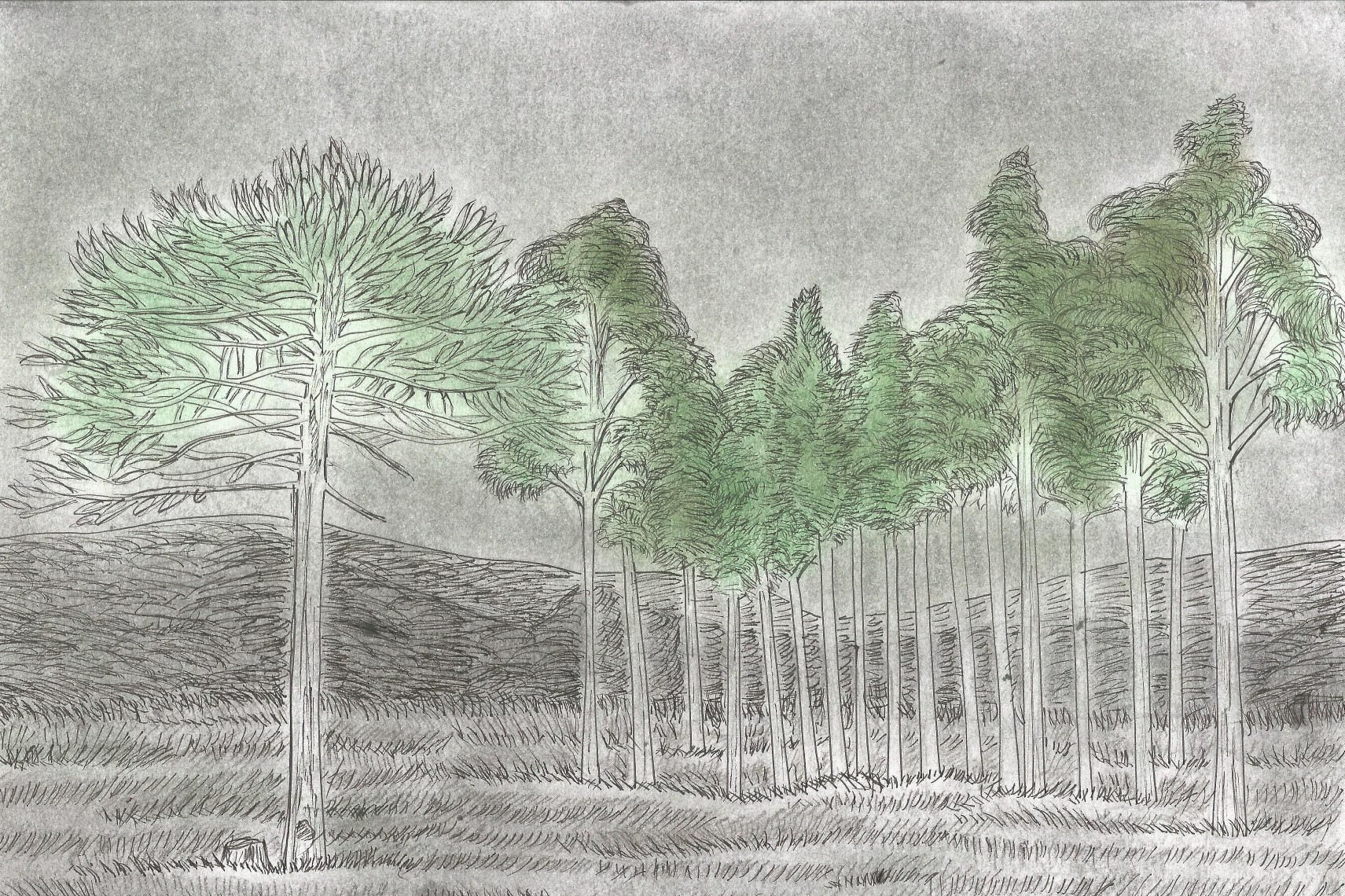
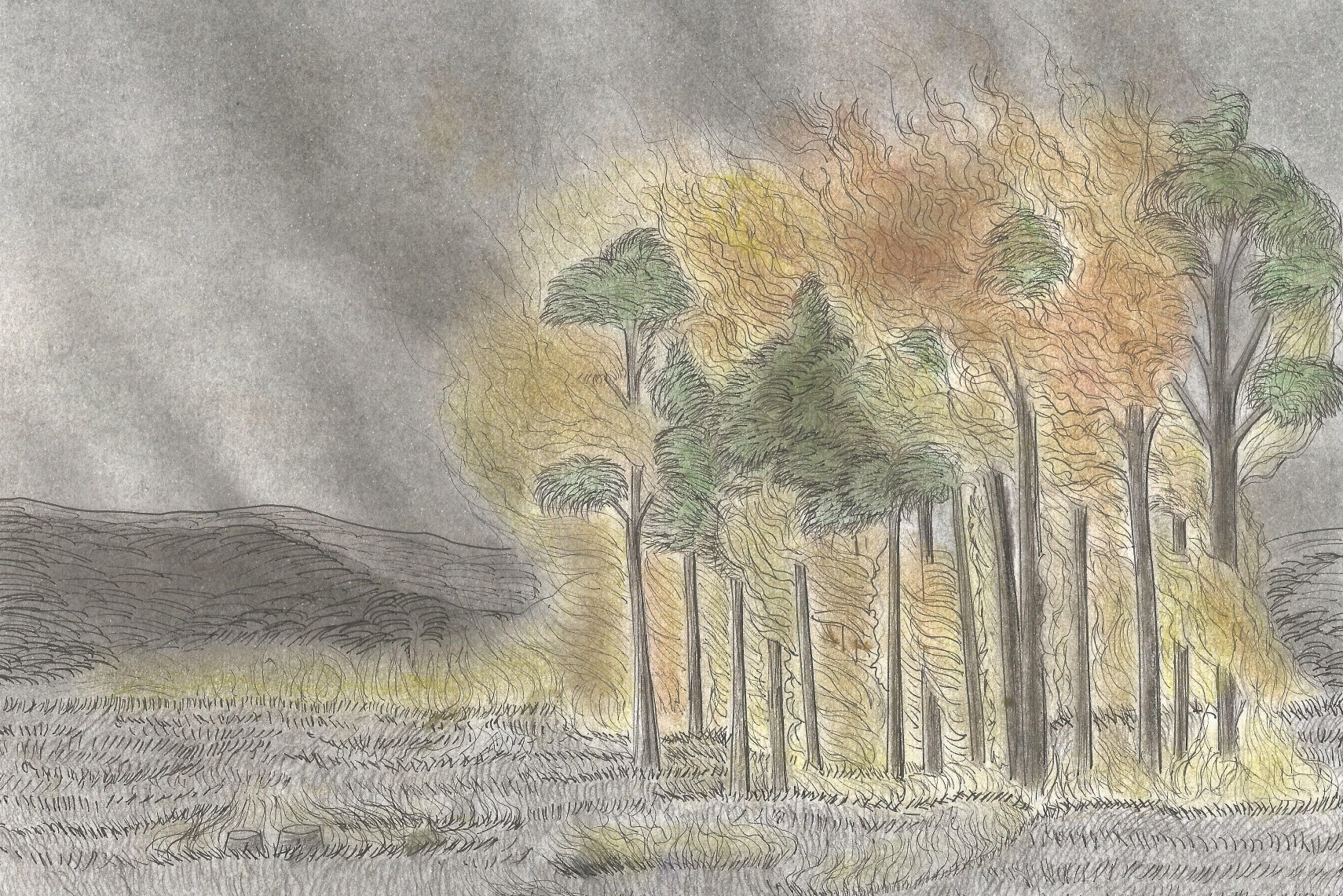
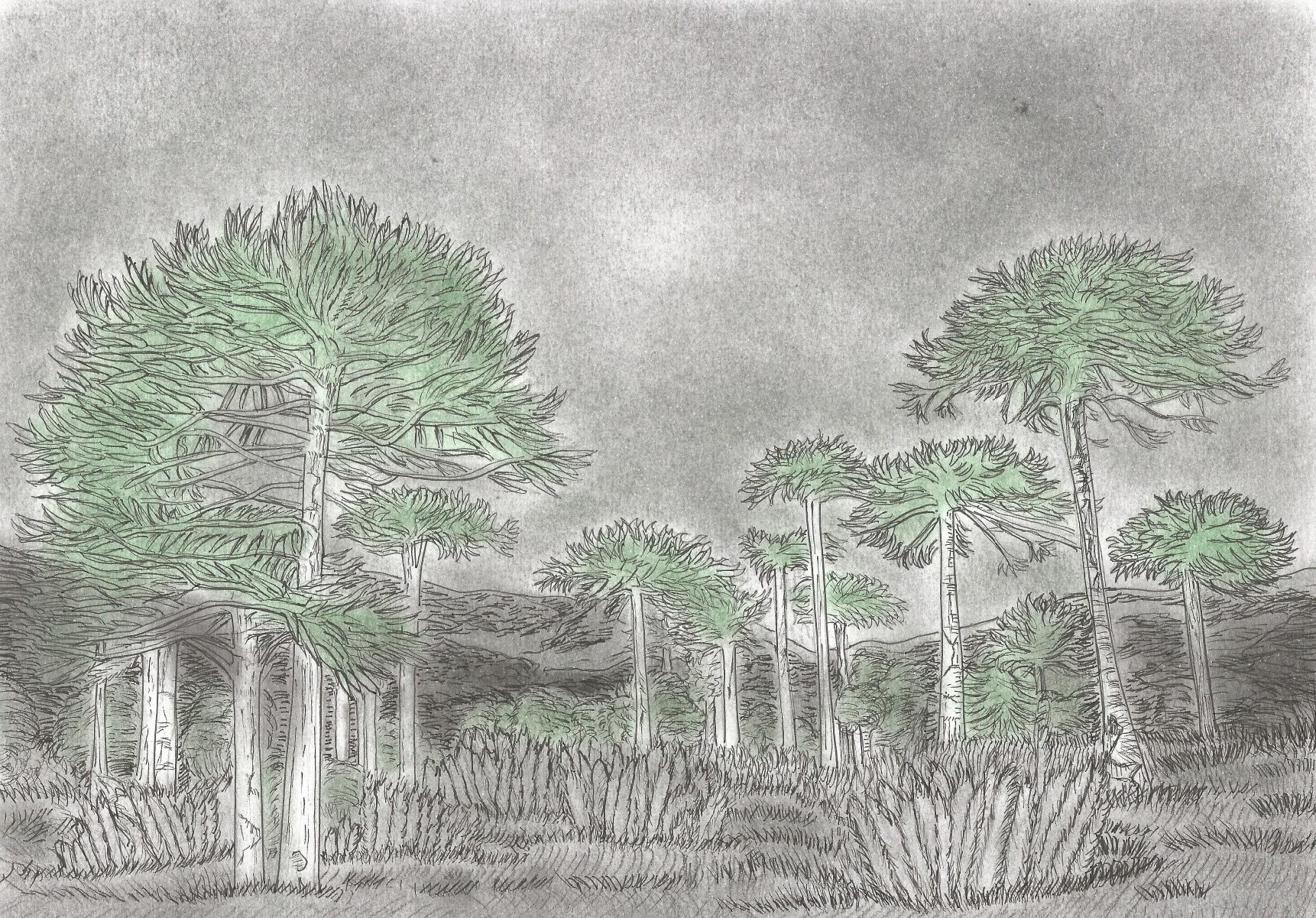
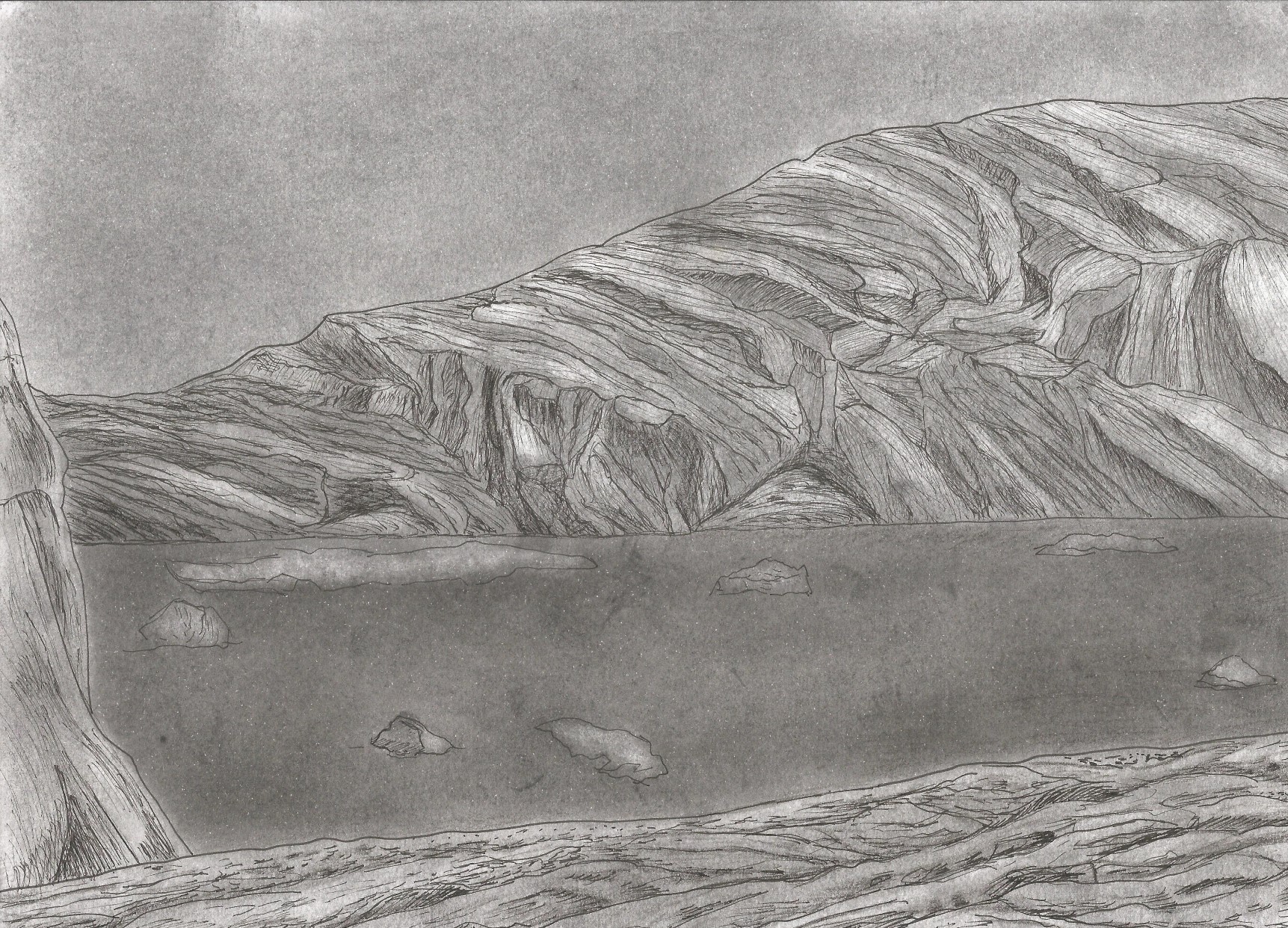
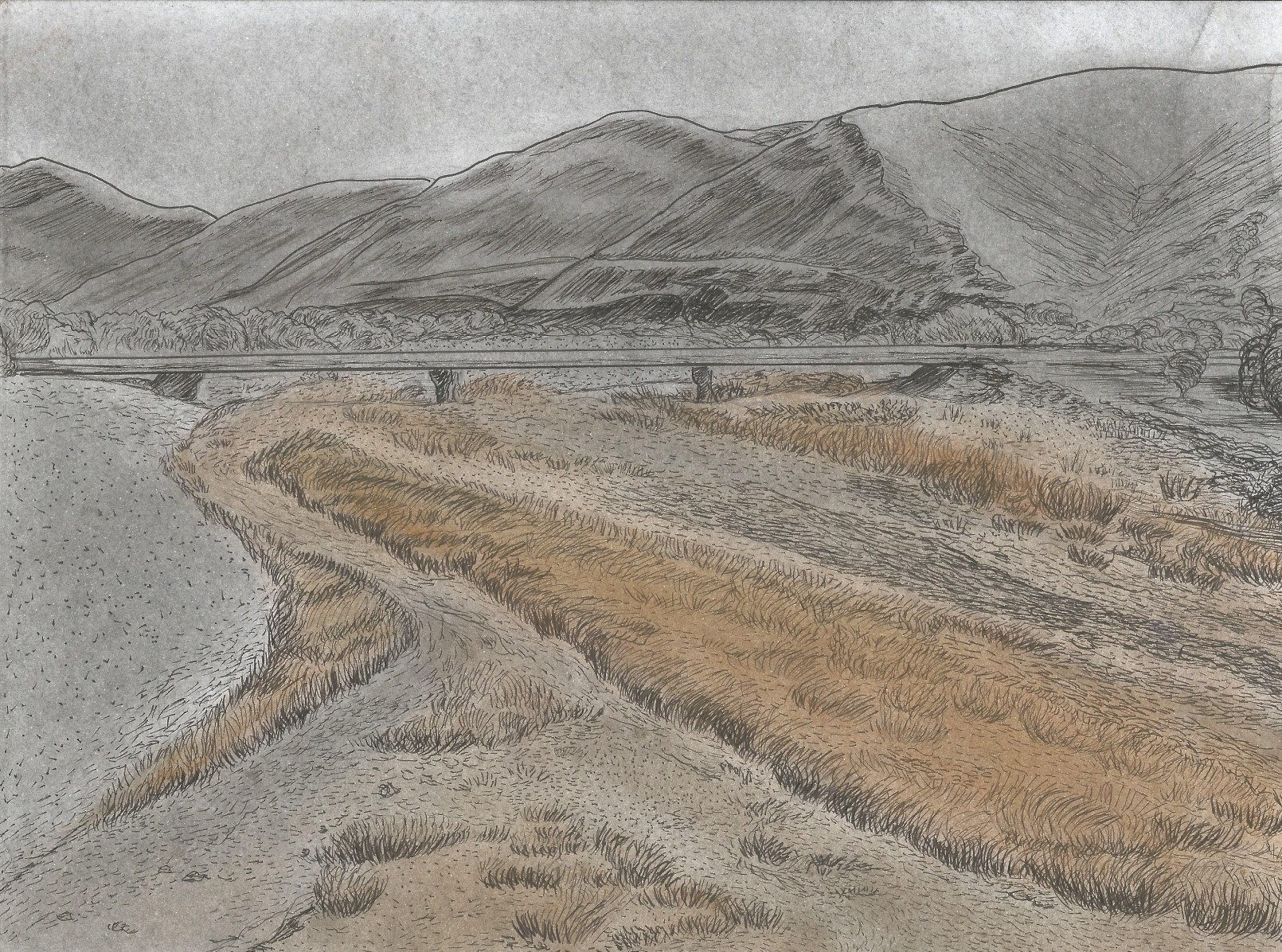
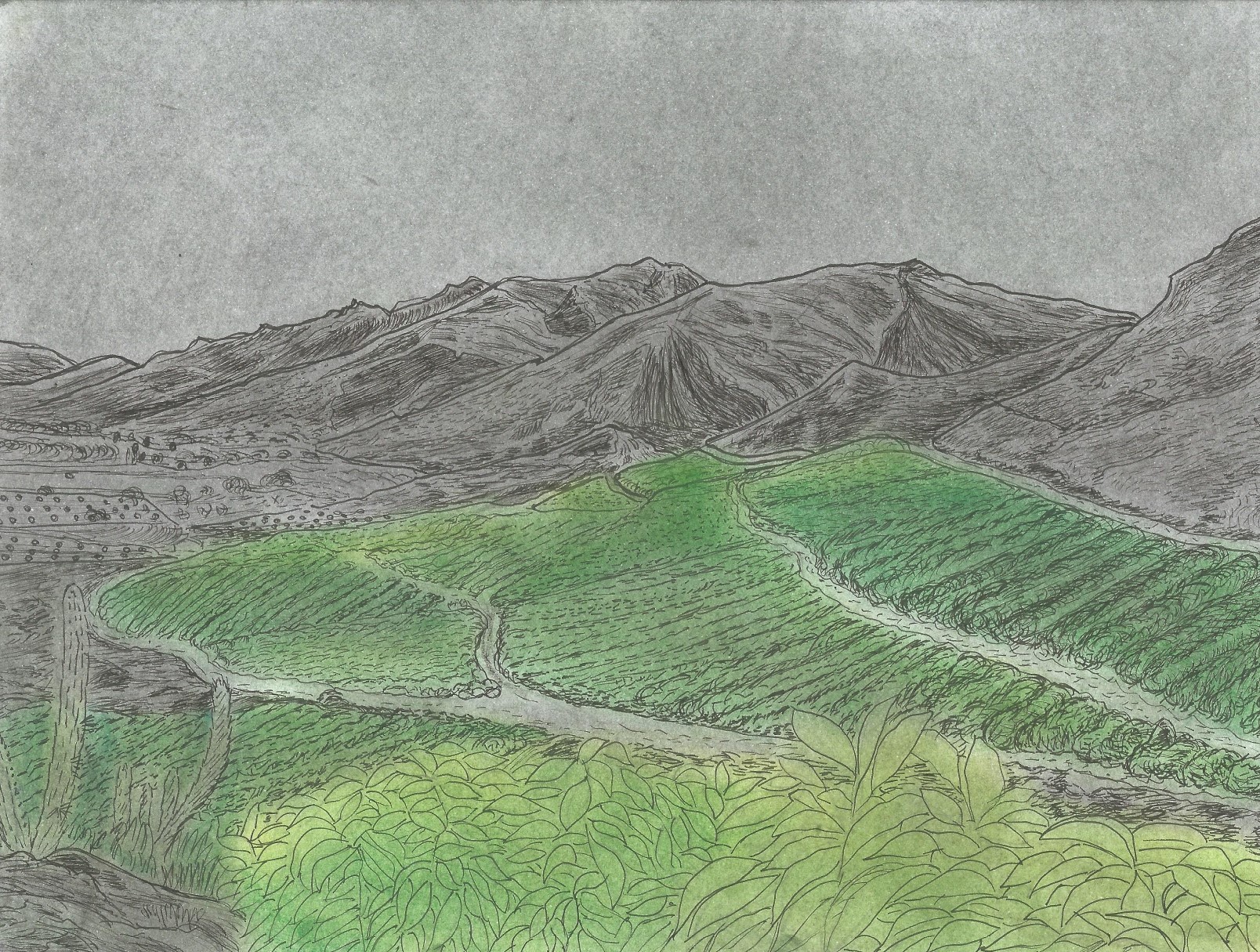
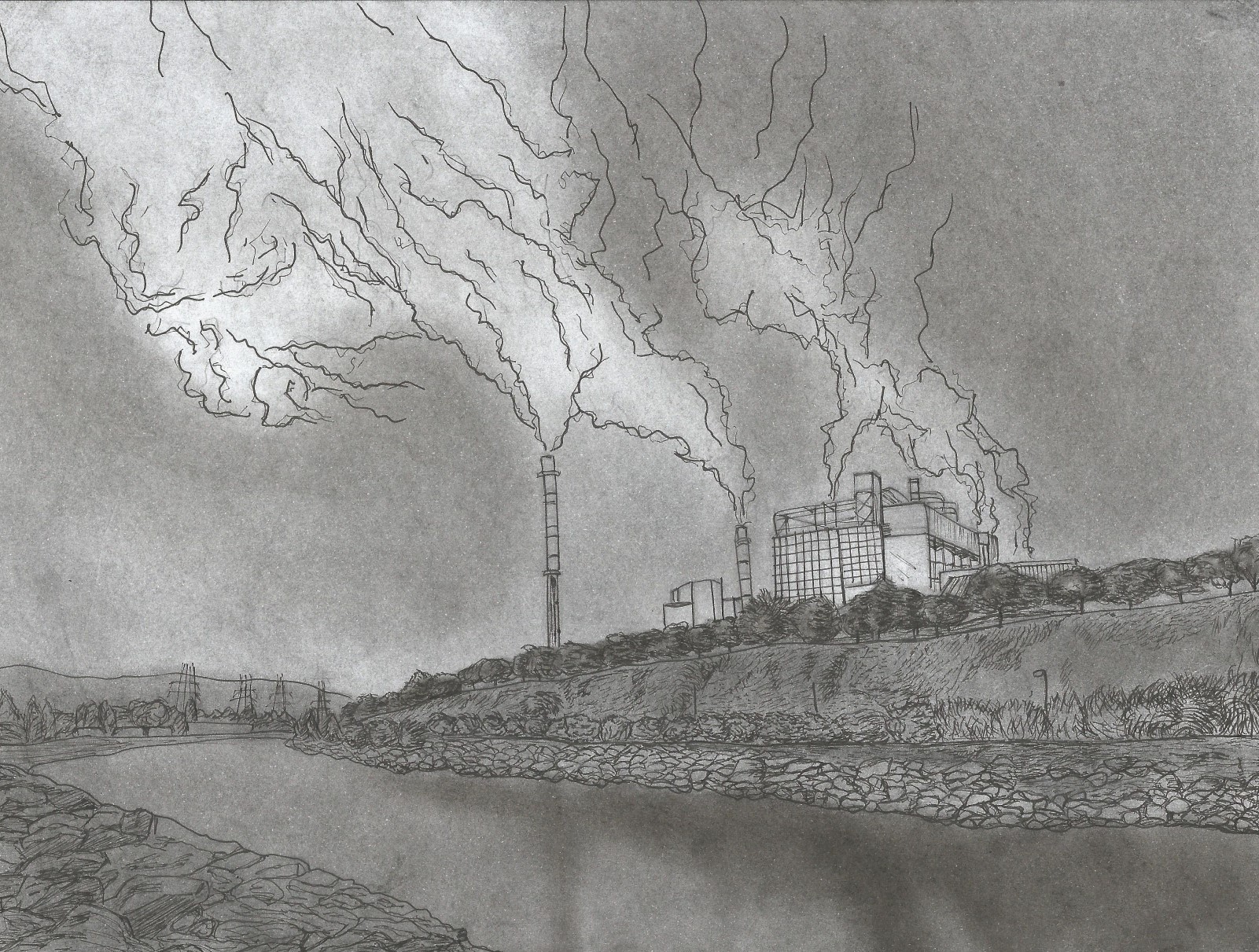
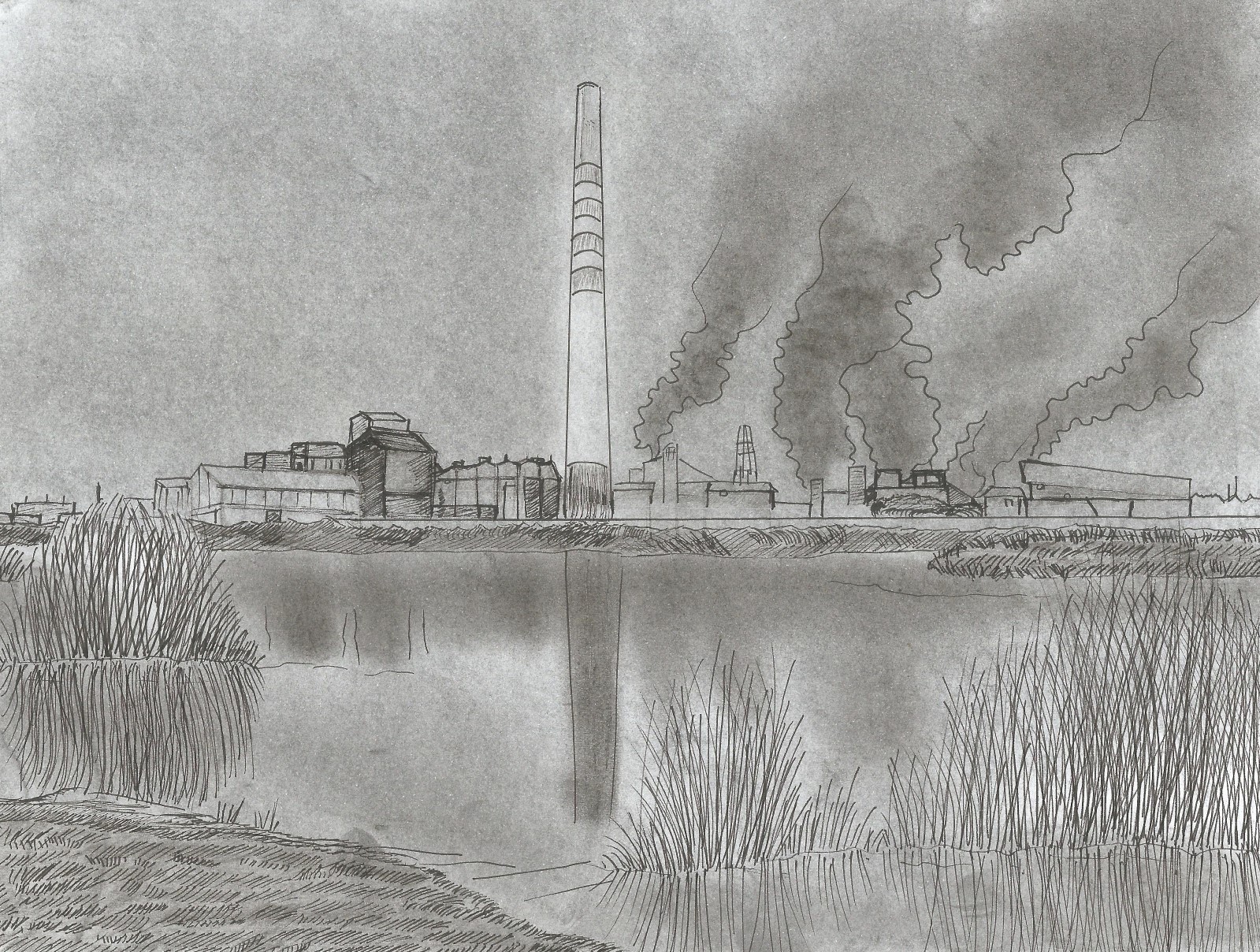
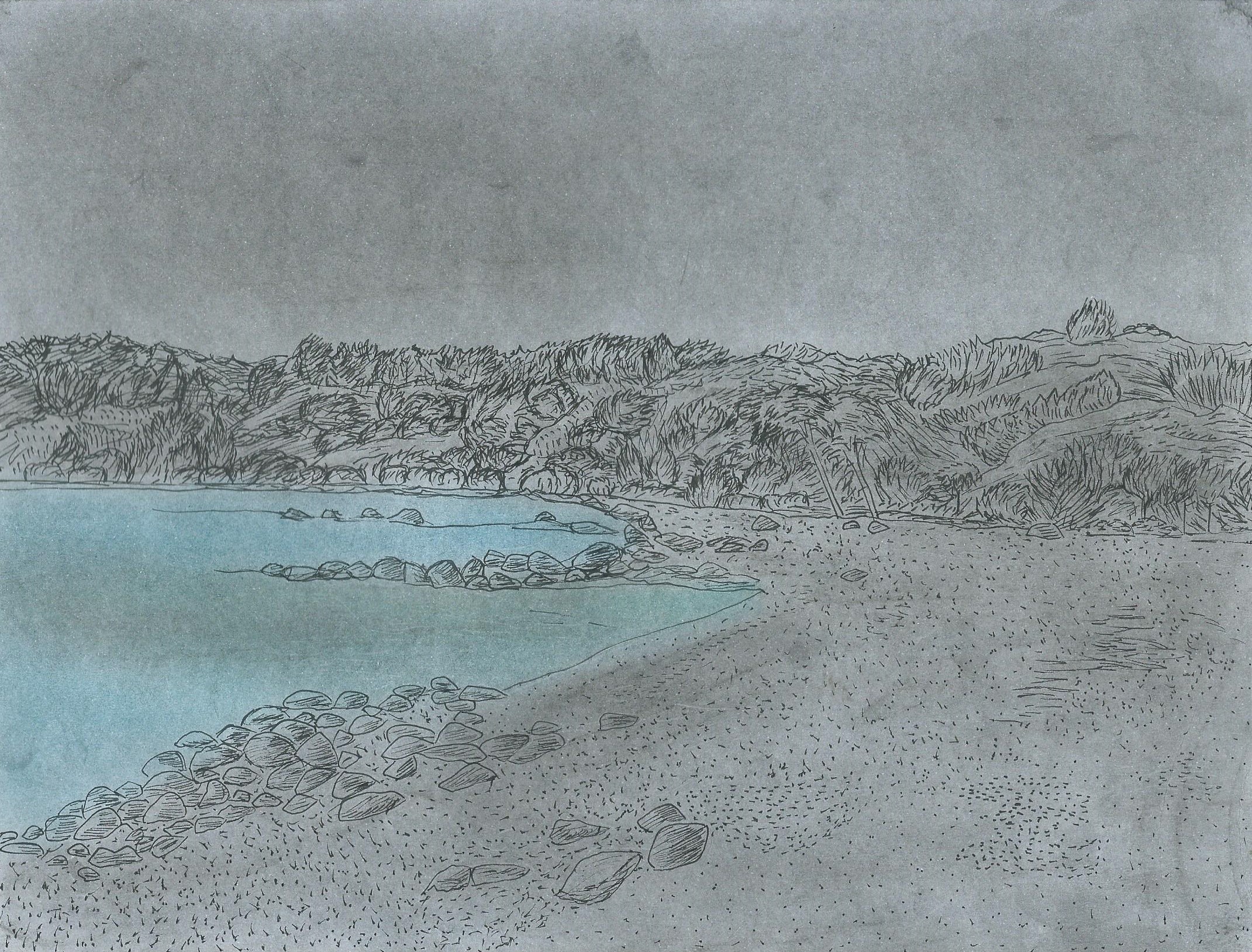
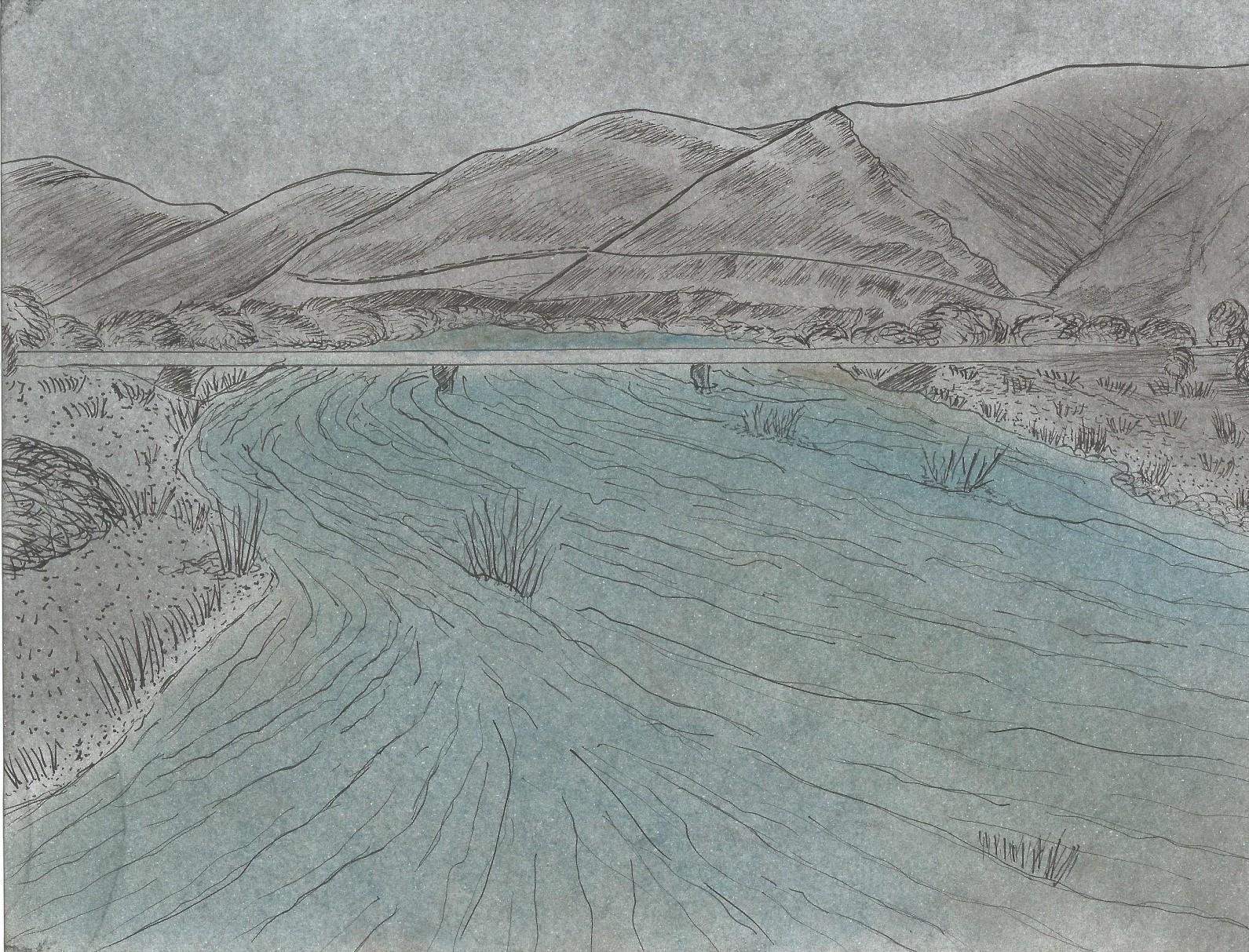
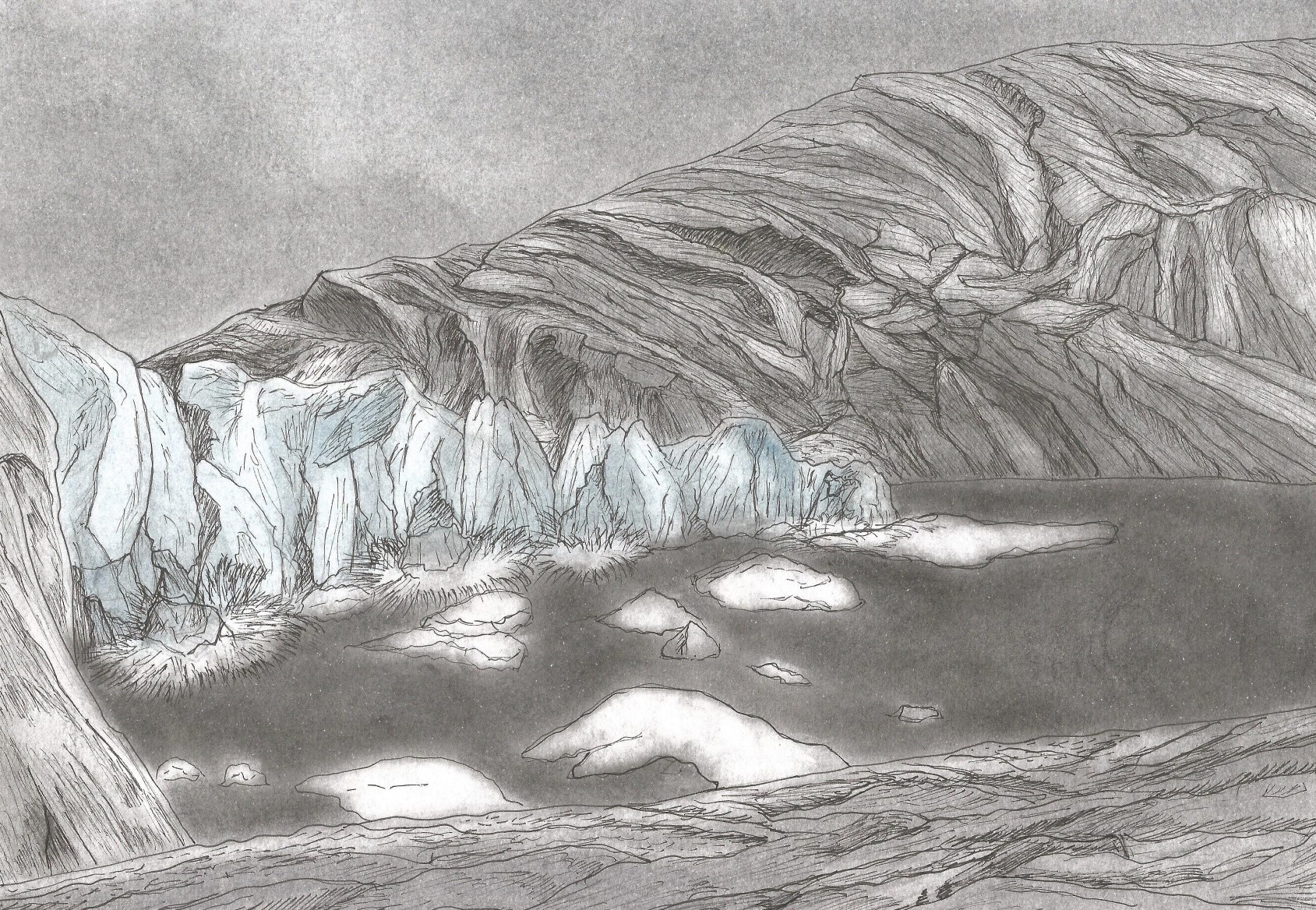
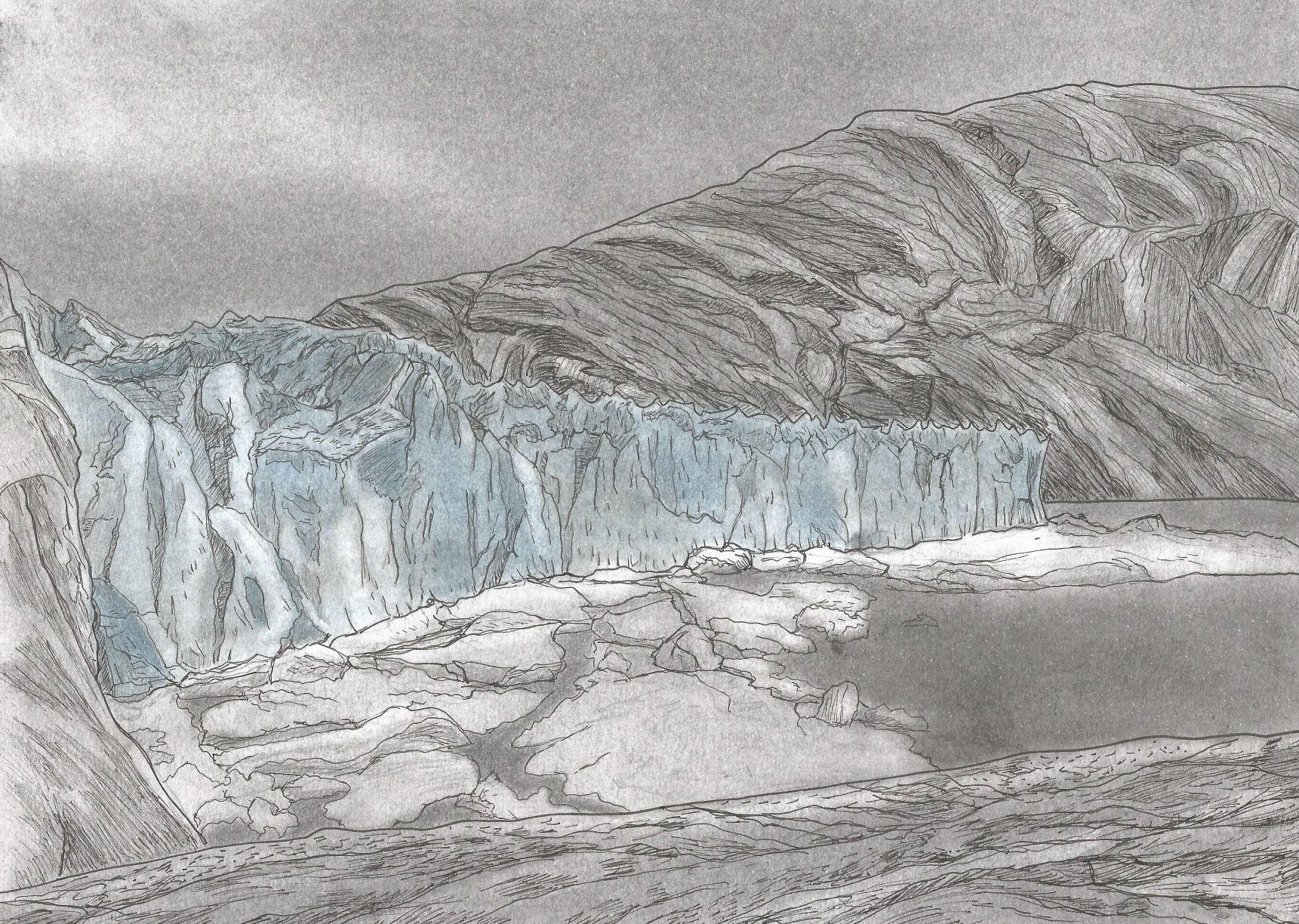
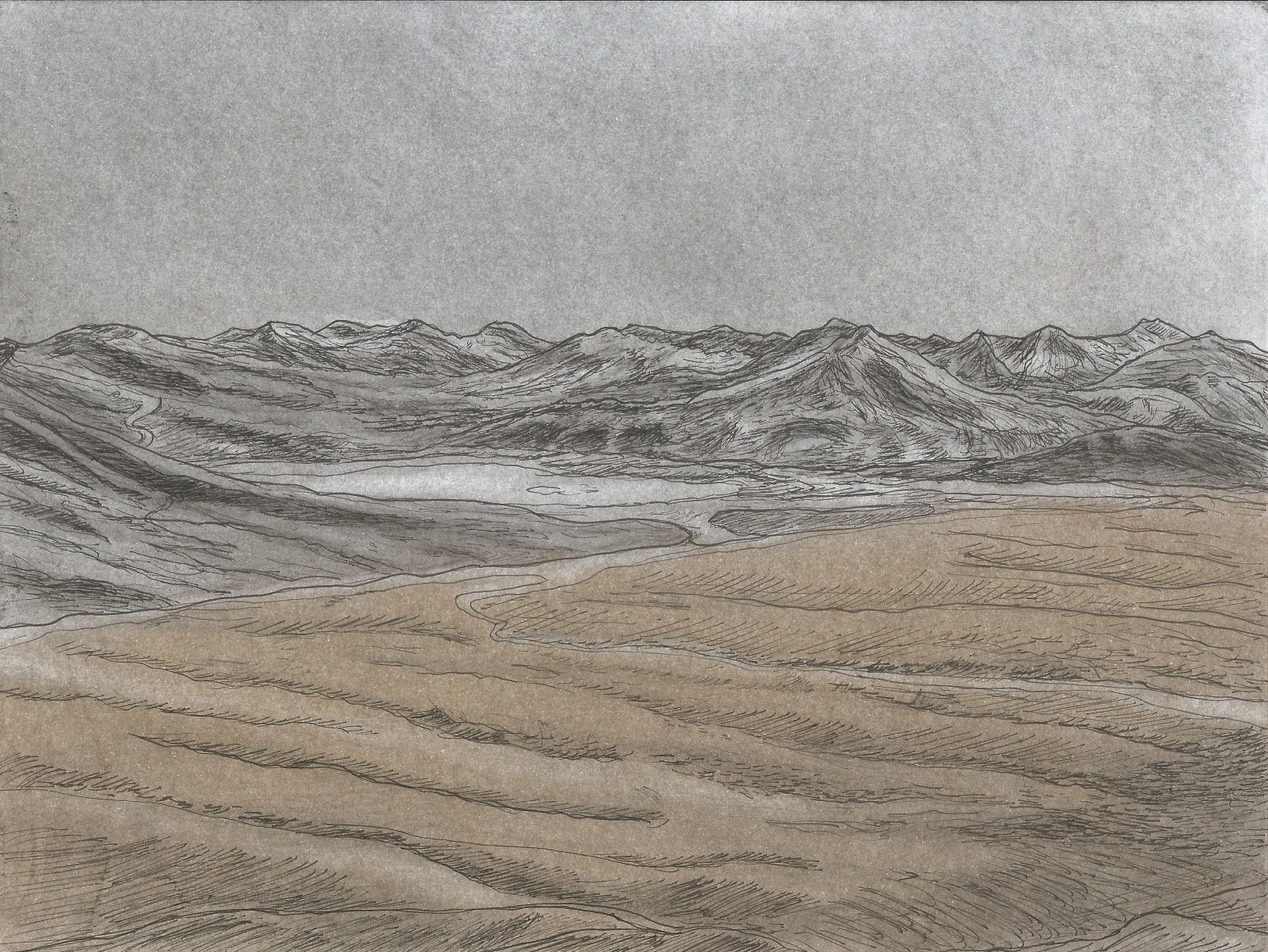
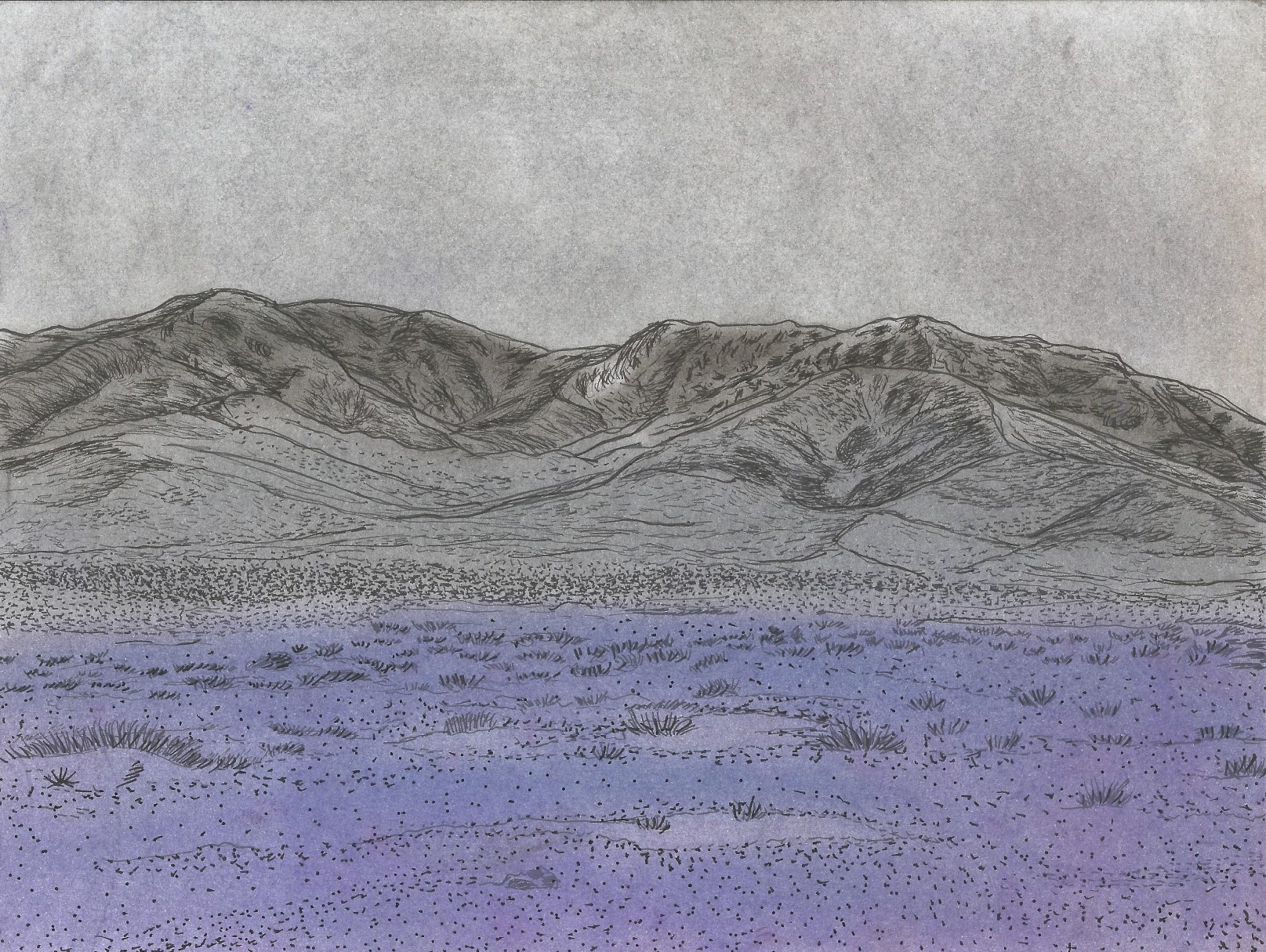
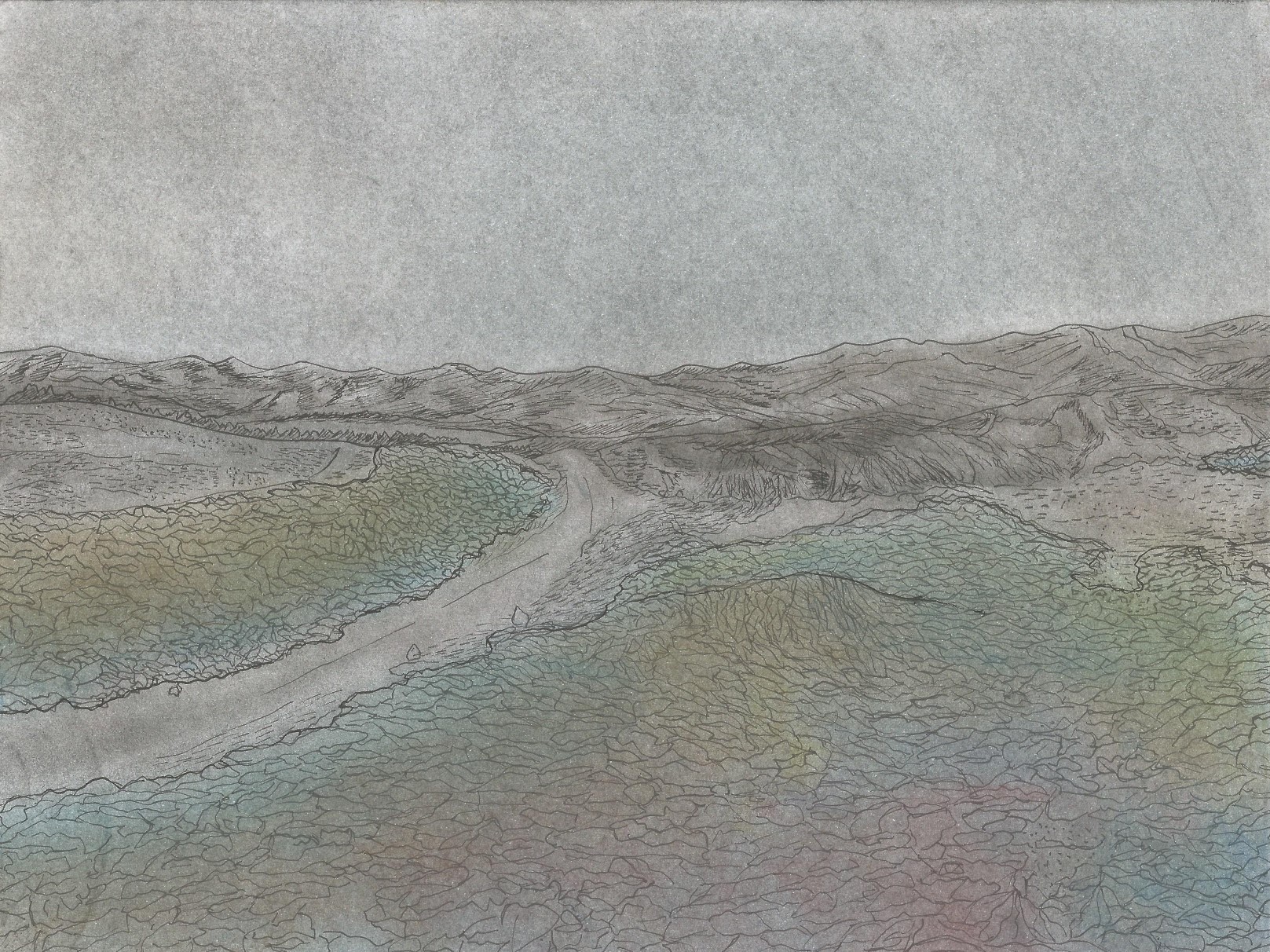
El primer grupo de ilustraciones aborda el bosque nativo de la Araucanía y como se ha modificado con el monocultivo de eucaliptos, impulsado por las
forestales, depredando el bosque nativo y favoreciendo la incidencia en incendios forestales en la región, cambiando definitivamente de forma permanente el paisaje y desertificando el suelo.
The first group of illustrations deals with the native forest of Araucanía and how it has been modified by the monoculture of eucalyptus trees, promoted by forestry companies, depredating the native forest and favouring the incidence of forest fires in the region, permanently changing the landscape and desertifying the soil.
Este segundo grupo de ilustraciones muestra el deshielo de los glaciares en la zona central y en el sur de Chile, proceso que culmina con la desaparición de estos, los cuales se ven sumamente afectados por el aumento gradual de la temperatura y por la construcción de caminos para los camiones de las mineras.
This second group of illustrations shows the melting of glaciers in central and southern Chile, a process that culminates in the disappearance of glaciers, which are highly affected by the gradual increase in temperature and the construction of roads for mining trucks.
La tercera serie de ilustraciones muestra la crisis hídrica sufrida actualmente en Petorca debido al desvió del agua adrede hacia los cultivos de paltos, destinados a la exportación de paltas , secando de esa forma los pocos ríos que quedan en la zona y provocando escases de agua para el consumo humano, dejando a comunidades enteras dependiendo de camiones aljibes, provocándose así un grave problema social. Cabe señalar que frente a esta problemática surgió el movimiento en redes sociales #Noavocado, donde chefs de todo el mundo llaman a prescindir de incorporar en las preparaciones a la palta.
The third series of illustrations shows the water crisis currently suffered in Petorca due to the deliberate diversion of water to avocado plantations, destined for avocado exports,thus drying up the few remaining rivers in the area and causing water shortages for human consumption, leaving entire communities dependent on water trucks, thus causing a serious social problem. It should be noted that in response to this problem, the #Noavocado movement has arisen on social networks, where chefs from all over the world are calling for the avocado to be eliminated from their preparations.
La cuarta serie de ilustraciones muestra el desierto de Atacama y la transformación que ha sufrido por los vertederos de ropa traídas desde el extranjero, afectándose así el ambiente del desierto, no sólo estéticamente sino también su ecosistema. Tanto es así, que postales tan icónicas como el desierto florido se ven amenazadas en el futuro.
The fourth series of illustrations shows the Atacama Desert and the transformation it has undergone due to the dumping of clothes brought from abroad, thus affecting the desert environment, not only aesthetically but also its ecosystem. So much so that iconic postcards such as the flowery desert are threatened in the future.
La última serie de ilustraciones muestra la zona de Quintero y Puchuncavi, una de las zonas de sacrificio más conocida en Chile , lugar donde se encuentra el proyecto industrial ventanas que cuenta con empresas como Codelco, AES GENER S.A ,Shell, Enap, Endesa, Copec entre otras que contaminan en forma severa el medio ambiente y al mismo tiempo provocando daños a la salud de la población.
The last series of illustrations shows the area of Quintero and Puchuncavi, one of the best known sacrifice zones in Chile, where the industrial project windows are located, with companies such as Codelco, AES GENER S.A., Shell, Enap, Endesa, Copec among others, which severely pollute the environment and at the same time cause damage to the health of the population.
Abstract /
Proceso /
obra
Volver a pagina de inicio / Back to home page